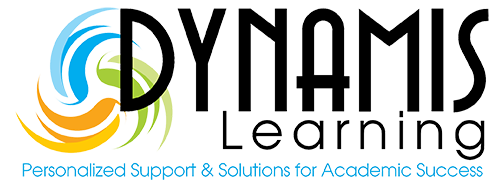Many parents are starting to hear about AVID and are wondering what it’s all about! According to avid.org, AVID helps develop reading, writing, and critical thinking skills as well as deep content knowledge. They do this by encouraging teachers and students to work together in a way that is positive, collaborative, and impactful. The program promotes healthy learning habits that students can carry with them throughout their education. Below are three benefits of AVID programs.
In the classroom:
To an outsider, an AVID classroom may not look all that different from a classroom one is used to seeing: teacher, students, desks… it’s all still there. But watch an AVID lesson and the differences become more apparent. Where you would expect to see a teacher standing in front of seated students in a typical classroom, you are more likely to find a lot more movement from the teacher and students alike in an AVID classroom.
 This is because AVID encourages lessons that allow students to “move and collaborate,” making lessons more engaging (avid.org). According to AVID, they teach educators to, “design learning opportunities that challenge students to think critically, ask questions, and collaborate to create solutions. The role students play in the classroom changes, as does their level of ownership of their learning.” Therefore, lessons aren’t just studying and memorizing, they are experiences that allow students to get involved in what they are learning.
This is because AVID encourages lessons that allow students to “move and collaborate,” making lessons more engaging (avid.org). According to AVID, they teach educators to, “design learning opportunities that challenge students to think critically, ask questions, and collaborate to create solutions. The role students play in the classroom changes, as does their level of ownership of their learning.” Therefore, lessons aren’t just studying and memorizing, they are experiences that allow students to get involved in what they are learning.
Another key difference between non-AVID and AVID classrooms is the relationship teachers have with their students. AVID teaches educators to “recognize the unique circumstances that each student brings to the classroom,” meaning that students in an AVID classroom are seen and treated as individuals. AVID accomplishes this thoughtful approach to teaching by providing insightful training and tools to educators. Teachers are introduced to “relationship-building activities” that are designed to start small and grow throughout the years (avid.org). Students know they are cared for and supported in the classroom, which gives them the environment that they need to build their own skills.
Student accountability:
According to AVID’s philosophy on student learning, “AVID students reflect and question while mastering content rather than just repeating and memorizing.” This requires students to actively engage in the curriculum. Holding students to a higher standard of involvement means that they are a key component to their own success. AVID starts this process by encouraging lessons that make students find their own answers rather than copy one given by a teacher. AVID lessons are student-centered, meaning that teachers help facilitate engaging activities and allow students to engage on their own. Students are basically encouraged to “talk, move around, and ask questions.” AVID teaching allows children to do what they do best while simultaneously teaching them to become more active learners. (avid.org)
Advantages of AVID
AVID does not only focus on collaborative learning, it also acknowledges the  importance of learning specific skills, such as “Note-taking, studying, and organizing assignments.” The AVID belief is that these skills need to be “explicitly taught” through “scaffold support.” Teachers give students direct instruction on how to take notes, study, and organize. (avid.org) They then gradually give students more responsibility and freedom until children are able to accomplish these tasks on their own. This gradual building of independence gives students the early support they need in order to correctly establish learning skills, then requires them to hold themselves accountable for keeping up with those skills later. By doing this, students can continue to develop and grow on their own for the rest of their education.
importance of learning specific skills, such as “Note-taking, studying, and organizing assignments.” The AVID belief is that these skills need to be “explicitly taught” through “scaffold support.” Teachers give students direct instruction on how to take notes, study, and organize. (avid.org) They then gradually give students more responsibility and freedom until children are able to accomplish these tasks on their own. This gradual building of independence gives students the early support they need in order to correctly establish learning skills, then requires them to hold themselves accountable for keeping up with those skills later. By doing this, students can continue to develop and grow on their own for the rest of their education.
College Preparation:
One of the more commonly known benefits of AVID is that it helps high school students prepare for college. What a lot of people don’t know, however is that AVID can start as early as elementary school. AVID Elementary, a program launched in 2007, was designed to help “young students to develop strong academic habits early,” creating a foundation for children to build on throughout their education (avid.org).
These skills can give AVID Seniors an advantage when it comes time for college testing and applications. According to their website, 93% of AVID students completed entrance requirements for acceptance into a four year college. Furthermore, 96% took the SAT, ACT, or both exams. Finally, 75% of students took advanced placement courses in high school.
 Want to hear another great statistic? 90% of the students who participated in AVID programs were accepted into a four-year college. And the benefits don’t stop after that. Because AVID is designed to help students to persist throughout their school careers, many find great success throughout their college years. According to their website, AVID helps to increase college enrollment, persistence, and completion rates. How? AVID’s purpose and goal is to give students critical tools needed to succeed in school. Whether a child is a second grader or a college sophomore, AVID can give them the knowledge, habits, and confidence they need to do well. This is because AVID offers a unique combination of student accommodations and accountability. They are given strategies that work for them specifically and are taught how to employ them on their own. AVID’s goal isn’t just to help students succeed in school; it is made to support them through life.
Want to hear another great statistic? 90% of the students who participated in AVID programs were accepted into a four-year college. And the benefits don’t stop after that. Because AVID is designed to help students to persist throughout their school careers, many find great success throughout their college years. According to their website, AVID helps to increase college enrollment, persistence, and completion rates. How? AVID’s purpose and goal is to give students critical tools needed to succeed in school. Whether a child is a second grader or a college sophomore, AVID can give them the knowledge, habits, and confidence they need to do well. This is because AVID offers a unique combination of student accommodations and accountability. They are given strategies that work for them specifically and are taught how to employ them on their own. AVID’s goal isn’t just to help students succeed in school; it is made to support them through life.
Source: https://www.avid.org/
